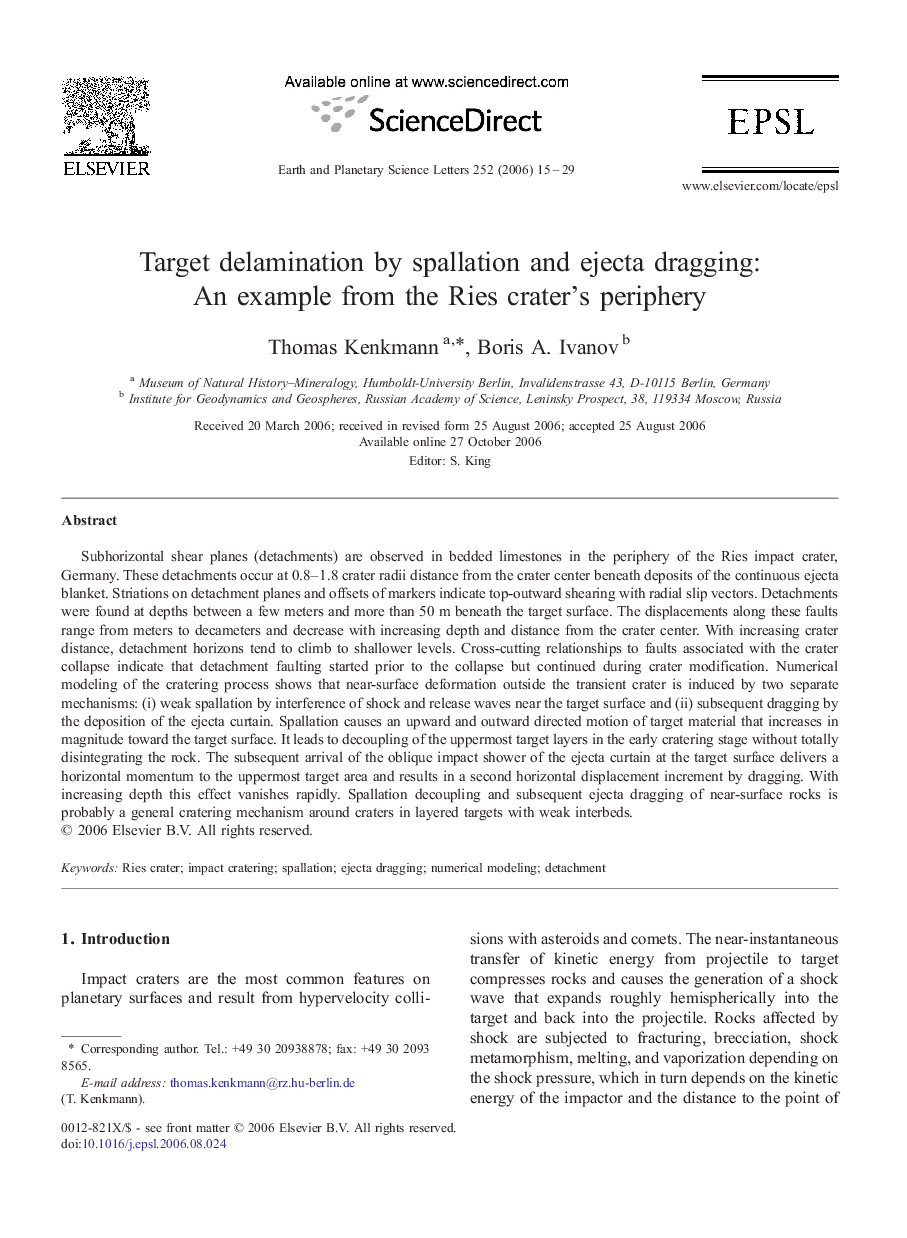| کد مقاله | کد نشریه | سال انتشار | مقاله انگلیسی | نسخه تمام متن |
|---|---|---|---|---|
| 6431201 | 1634931 | 2006 | 15 صفحه PDF | دانلود رایگان |

Subhorizontal shear planes (detachments) are observed in bedded limestones in the periphery of the Ries impact crater, Germany. These detachments occur at 0.8-1.8 crater radii distance from the crater center beneath deposits of the continuous ejecta blanket. Striations on detachment planes and offsets of markers indicate top-outward shearing with radial slip vectors. Detachments were found at depths between a few meters and more than 50Â m beneath the target surface. The displacements along these faults range from meters to decameters and decrease with increasing depth and distance from the crater center. With increasing crater distance, detachment horizons tend to climb to shallower levels. Cross-cutting relationships to faults associated with the crater collapse indicate that detachment faulting started prior to the collapse but continued during crater modification. Numerical modeling of the cratering process shows that near-surface deformation outside the transient crater is induced by two separate mechanisms: (i) weak spallation by interference of shock and release waves near the target surface and (ii) subsequent dragging by the deposition of the ejecta curtain. Spallation causes an upward and outward directed motion of target material that increases in magnitude toward the target surface. It leads to decoupling of the uppermost target layers in the early cratering stage without totally disintegrating the rock. The subsequent arrival of the oblique impact shower of the ejecta curtain at the target surface delivers a horizontal momentum to the uppermost target area and results in a second horizontal displacement increment by dragging. With increasing depth this effect vanishes rapidly. Spallation decoupling and subsequent ejecta dragging of near-surface rocks is probably a general cratering mechanism around craters in layered targets with weak interbeds.
Journal: Earth and Planetary Science Letters - Volume 252, Issues 1â2, 30 November 2006, Pages 15-29